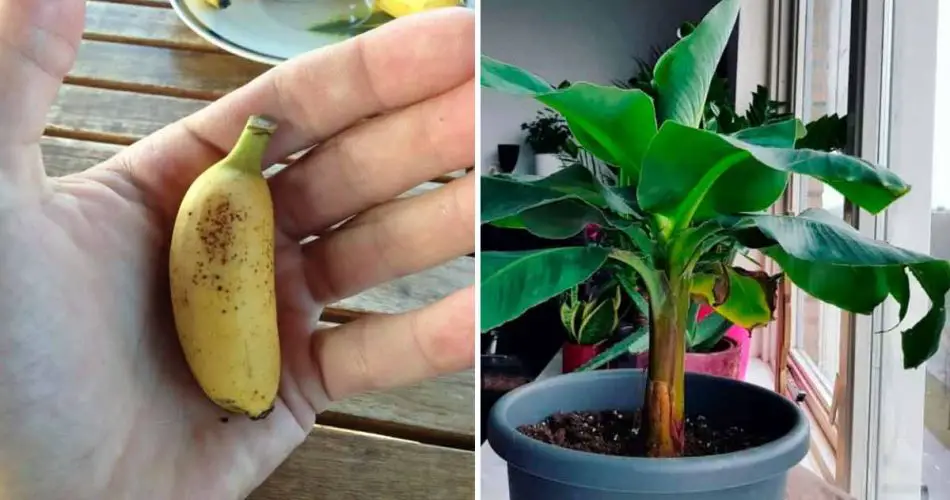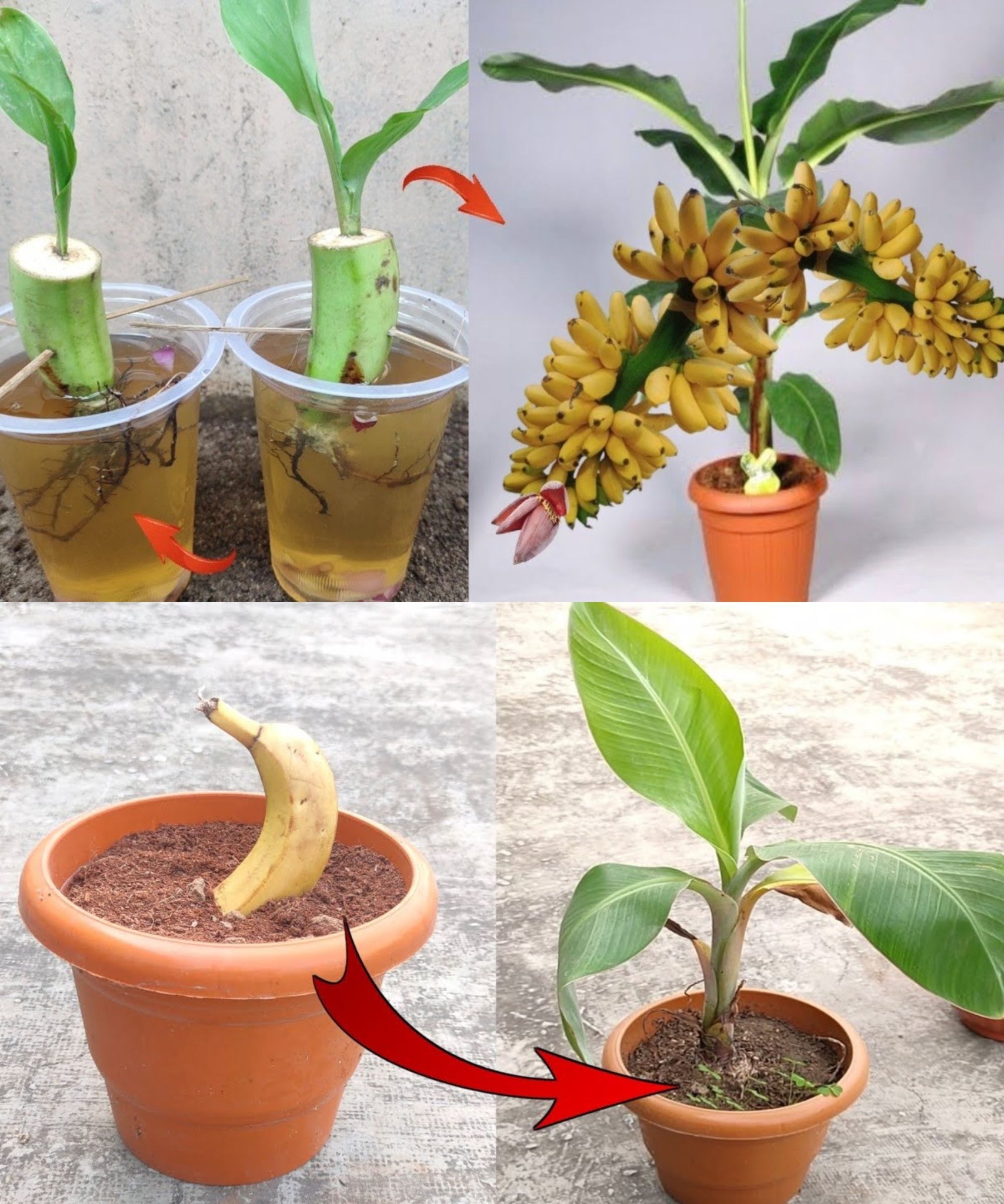Of course, it is very difficult to grow a banana tree, but we are here to help you.
Is growing a banana tree from a banana feasible? The answer is “yes”, and we’ll tell you how to do it in the article.

How to grow a banana tree from a banana?
To set yourself up for success in growing a banana tree from a seed, you’ll need to gather a few essential tools and materials. Make sure you have a water sprayer, a strainer, a tray, and some toilet paper at hand. Don’t forget a knife and a spoon as well. Next, you’ll need to acquire your seed, which means a trip to the supermarket to select smaller fruits, as the larger, selectively bred ones rarely yield viable seeds. Before you extract the seeds, ensure the banana is fully ripened by letting it sit in a warm place for three days until the skin turns black.
Peel the ripened banana and slice it lengthwise to find the seeds, which are often concentrated near the stem.
For planting, first aerate your soil by sifting it, then spread it in the container. Place the seeds on sheets of paper and cover them with a thin layer of sifted soil, about 0.5 cm deep. Gently mist the surface with your water sprayer. Cover the tray with a lid or plastic wrap and position it in a warm spot, like on a radiator. It’s important to maintain daytime temperatures between 27 to 33°C and nighttime temperatures between 20 to 25°C.
Once the first sprouts emerge, remove the cover and move the tray to a windowsill where there’s plenty of light. Keep the most vigorous seedlings and thin out the weaker ones. When the seedlings are sturdy enough, transplant them into individual pots to continue their growth.
You have to take good care of the plant!
Keep in mind that banana trees are fond of warmth, yet their care isn’t drastically different from other tropical plants. Consistent and timely watering is crucial to keep them hydrated and to fend off pests. It’s an impressive feat to have successfully grown a banana tree from a seed, especially in one’s own garden. While many palm trees are typically associated with warm climates, there is a variety that can withstand cooler temperatures. The Musa basjoo species is renowned for its cold hardiness and is a popular choice in temperate regions. This resilient banana tree is also known as the Japanese or Chinese banana.
